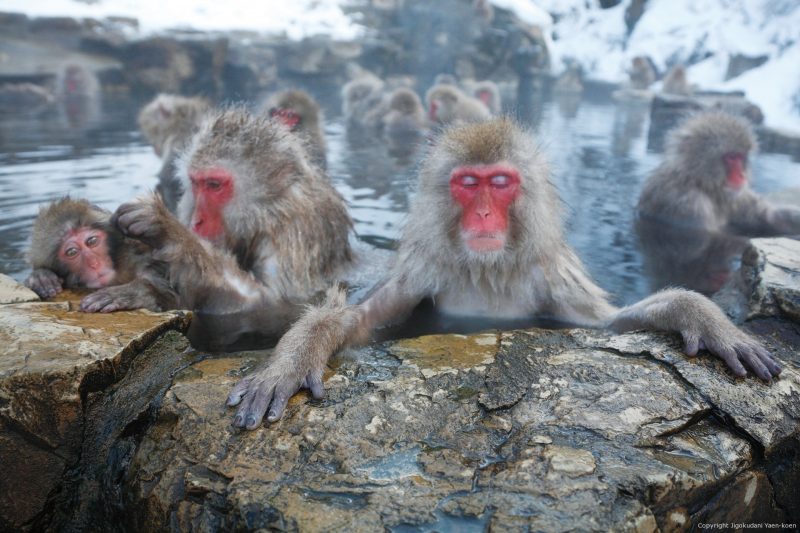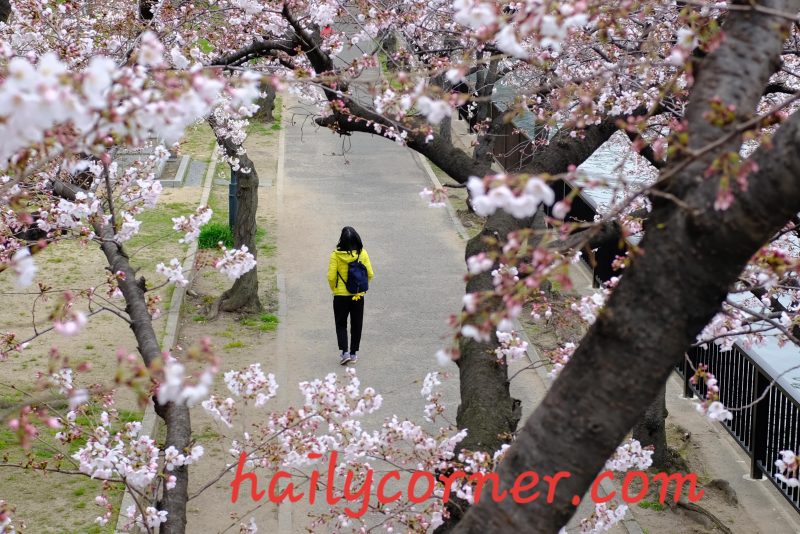Đam mê du lịch, nhưng trước đấy, mình chỉ xem chương trình thực tế là chính, chưa xem phim tài liệu du lịch. Từ khi xem “Joanna Lumley’s Trans-Siberian Adventure”, mình thành người hâm mộ, thích nghe giọng kể ấm áp, nhẹ nhàng và cũng rất hài hước của cô Joanna. Ủ mưu đi tìm hết các phim tài liệu du lịch của cô để xem. Xem xong và ghi lại các nội dung cần thiết, mai này làm tư liệu đi bụi.
Danh sách các tập mình đã có ghi chú theo thứ tự xem:– Trans-Siberian Adventure (2015)
– Japan (2016)
– Unseen Adventures (2020)
– India (2017)
Với bộ Nhật Bản, xem xong mình rất bất ngờ. Mình đã đi Nhật một lần, cũng kỹ trong việc tìm hiểu về đất nước sẽ đi du lịch. Vậy mà nhiều thông tin, điểm đến trong phim hoàn toàn mới và lạ lẫm với mình. Hóa ra, du lịch không chỉ để ngắm cảnh đẹp và chụp ảnh, cũng cần tìm hiểu các khía cạnh khác cũng hấp dẫn không kém: thiên nhiên, địa lý, lịch sử, con người, văn hóa, ẩm thực. Như vậy mới trọn vẹn. ❤??
? Eki Stamp Your Way Through Japan:
Eki stamp (駅スタンプ, train station stamp) is a free collectible rubber ink stamp, which is found at many train stations or hotels or something in Japan. Their designs usually have beautiful details decrypting the area. It also makes a great souvenir on your way through Japan.
https://www.kulturekween.com/eki-stamp-japan-train/

? Heat patch is the thing when you’re going out in the cold, you don’t freeze. Don’t put them directly on to your skin.
? From the very start, Japan made a big impression. It sort of sounds a strange thing to appreciate so much, but the lavatories here absolutely fantastic. They seem to know when you are coming in, they’ve got warmed seats. Sometimes it flushes the loo when you get up, you don’t have to flush it. You could live in a Japanese lavatory.
? Shinto, being the closest thing Japan has to a national religion. It translates as “the way of the spirits”. And across Japan are Shinto shrines, the home of spirits.
1. HOKKAIDO
This island makes up a 5th of Japan’s landmass but is home to less than 5% of its population, with vast national parks. Hokkaido is island of nature and wildlife.
? RED-CROWNED CRANES, A BIRD WATCHER’S PARADISE IN THE NORTH OF HOKKAIDO
In the 1920s, these beauty Red-Crowned Cranes had almost completed died out. Hokkaido is now the only place you can see them, these are very rare birds.
Each night, they gather together in the local river to keep warm. Then wake as the sun rises. They can live for over 30 years and represent longevity in Japan. They mate for life, dancing for their partner even after many years of being together.

More information here:
https://best.visit-hokkaido.jp/nature/experience/cranes-wild-birds/
? SNOW FESTIVAL IN SAPPORO
Sapporo is one of Japan’s smaller cities, with the population of just 2 million people. But for one week of festival that doubles as 2 million visitors arrive from around the worlds. The festival began almost 70 years ago. It is one of biggest events in Japan. As night falls, the 1 mile stretch of the snow festival fills with thousands of visitors, and over 200 snow sculptures are bathed in exuberant light shows.

? THE AINU’S CULTURE
The name Sapporo is not Japanese at all but comes from the language of the Ainu, the indigenous people of Hokkaido. 150 years ago, the Japanese feared the Russians would invade the island, so they decided to colonize it. They made everything and everyone here Japanese, including the Ainu. They banned their language, and their culture. The distinctive that tattoos that women were given when they came of age were also forbidden. The Japanese government finally recognized the Ainu as the indigenous people of Hokkaido in 2008. But with a population that is 98.5% ethnically Japanese, and where immigration is barely heart of, racial diversity is still far from the norm in Japan.

2. HONSHU
Honshu is the main island where the Japanese culture has flourished for thousands of years. After all, Japan is the country that for over 200 years locked itself away from the outside world. It gaves the Japanese time to create a unique culture. And on the main island of Honshu that culture is still very much alive.

? THE BEST SAKE IN AKITA
Suzuki Hideyoshi Brewery has best sake in Akia. This brewery was established in 1689, so we’ve been making sake for more than 332 years. And the method has never really changed. The current owner is 19th generation.
? FIRE FESTIVAL
For thousands of years in Kakunodate, people have relied on the rice harvest and every winter in this town, a fire festival is held to protect the crops from the bad spirits. It’s celebrating the fire god Kagutsuchi. Traditional straw baskets are set on fire and they swing them around.
? 700-year-old pagoda in MOUNT HAGUNO
For centuries, making the long journey to Mount Haguno was a pilgrimage for boys from around Japan who were about to enter adulthood. It is such a challenging beginning. Built in 1372, this 5-story pagoda is made entirely of wood. There are no metal nails holding it together. Despite this, it’s survived for over 600 years, in one of the most earthquake-prone areas of the world.

? NAGANO HOT SPRING
The Japanese macaque is a terrestrial Old World monkey species that is native to Japan. They are referred to as “snow monkeys” because they live in areas where snow covers the ground for months each year– no other non-human primate is more northern-living, nor lives in a colder climate. Jigokudani Yaen-koen (Hell valley) is the only place in the world where monkeys bathe in hot springs.
And it is not for monkeys only. For over a thousand years, people have been coming to this area to bathe in its hot waters. Shibu Onsen’s main street is dotted with inns, hotels, and lots of onsen. When you stay at an inn in this lovely old town, they give you a key and attached little map of all the onsen that your key can open.

? TOKYO
Tokyo has been the center of power in Japan for over 400 years. 38 million people, nearly one-third of the population of Japan, lives in this huge city. The city was firebombed in WW2, nothing left standing. Everything was rebuilt from ashes into the world’s second biggest economy.

? NAKASENDO WAY (the middle mountain way,中山道)
Centuries ago, the route between Tokyo and Kyoto passed through the remote Kiso Valley on the legendary Nakasendo way. This road was like the M1 of 16th-century Japan, and back then, in the days of samurai and the shogun, it was one of the few ways you could travel between two great cities.
“Naka” means “middle”, “sen” means “mountain”, “do” means “way”. The starting point of Joanna’s walk is Tsumago (42th station), one of 69 postal towns along the route. It took 5-miles trek to Magome (43rd station), through winding, unspoilt countryside is hilly, and feels remote after the busy city. There is a tea house, Tateba Chaya, which set up along the route to offer weary travelers refreshments.

More information about the history of the Nakasendo highway is available at the website https://www.nakasendoway.com/
? KYOTO’S CHERRY BLOSSOM
Kyoto was Japan’s capital for over 1000 years and it still has a proud and refined air. Its thousands of Buddhist temples, Shinto shines, and ornate gardens were spared the blanket-bombing of World War 2, and now attract a throng of tourists, especially at the cherry blossom season of year. This season is to famous to do much talking about it. A whole country can be gripped by blossom fever. Philosopher’s Walk is a popular hanami spot in Kyoto.

? GEISHA/ MAIKO (a trainee Geisha) – A PART OF KYOTO’S NIGHT
Gion district is synonymous with that most Japanese tradition, the geisha (geiko).
Contrary to popular belief, geishas are not some form of “ladies of the nights”. The literal translation of geisha means “art person”. In the 18th century, they entertained clients in the pleasure quarters of cities with music, dancing, and singing, and were distinctly separate from the prostitutes and courtesans. In modern-day Japan, they have a certain celebrity status. Mainly, they are hired by rich businessmen as party hosts, or to entertain important guests in private tea-house parties. Geikos only use black, red, and very thick white make-up, so their faces would glow in the candle light. The nape of the neck, which is considered especially attractive, is seductively left bare. A maiko has joined into rigorous 5-year program, preparing to become a fully-fledged geiko. For this 5-year, they don’t have to pay anything, like accommodation, food, lesson fees, hairdresser fees. Everything’s provided by the houses. Therefore, they don’t get paid for the works that they’ve done, till they are geikos.

3. SHIKOKU PILGRIMAGE
Across the island, monks perform a ceremony dating back to the 6th century. 35% of Japan is Buddhist, and all over the island, thousands of white-clad faithful pilgrims can be seen making their way between the 88 temples along 1,200km of the route. It takes from 30 to 60 days to complete.
The pilgrimage is to honor Shikoku’s most famous son Koubou Daishi, who brought Shingon Buddhism to Japan in 9th century. Most Japnanese combine Buddhism with elements of Shintoism to form more fluid spirituality rather than a defined religion. 200 thousand people complete this pilgrimage every year.
The pilgrimage is traditionally completed on foot, but modern pilgrims use cars, taxis, buses, bicycles, or motorcycles.

More informatio here:
https://shikoku-tourism.com/en/shikoku-henro/shikoku-henro
4. KYUSHU
Due to its many active volcanoes, Kyushu is known as the island of fire.
Sakurajima is the most active volcano in Japan but 7,000 people choose to stay here. On the island, such is the threat from debris thrown from the volcano that all school kids must wear hard hats on their way to and from school.

Even though, it brings a gift to people here. Sakurajima is famous for its super-sized radishes. When Sakurajima explodes, it rains down the pumice stones which promotes really good root development. This incredible fertile soils traps air and water and makes for some gigantic radishes.

5. RYUKYU ISLANDS
These, also known as the Nansei islands,
is a chain of islands that stretch southwest from Kyushu nearly to Taiwan. The people of these islands are ethnically different to the mainland people of Japan and maintained their independence up until 1879.
Hailing from the remote, coral-fringed island of Kohama in Okinawa, a group called KBG84 pulls off a pop sensation, clinches a No. 1 hit in the Japanese charts of 2015 with their catchy little number “Come on and dance Kohama”. “KGB” is an acronym for Kahamajima (city name), Gasshodan (Choir), oBachan (Grandmother) and “84” is their average age.


